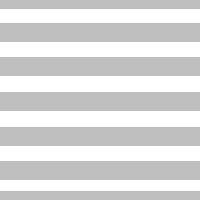This is about : THIS Design Principles READ NOW
And this article : THIS Design Principles READ NOW
Article alignment, Article balance, Article contrast, Article design principles, Article design theory, Article dominance, Article principles of design, Article proportion, Article proximity, Article repetition, Article rhythm, Article Unity,
THIS Design Principles READ NOW
It is recommended that you read the notes on Design Elements before reading these notes as some of the terms used here are explained in that section.There are 5 basic concepts or theories in the area of design, collectively known as the principles of design; they are Balance (Alignment), Rhythm (Repetition), Proportion (Proximity), Dominance (Contrast) and Unity. Theses principles are sometimes know by different names hence the brackets.They represent the basic rules of how to arrange a composition and create a successful design. In order words they guide us in the way we arrange the elements of design. Sometimes we look at an image or object and we find it aesthetically pleasing or easy on the eye but we may not quite understand why. The reason is that one or more of the principles of design are at work.
Balance/ Alignment:
Balance refers to the arrangements of design elements within a composition, how they relate to each other and the overall composition. Elements can have different visual weights dependent on their size, shape or colour and if positioned poorly they can unbalance a composition. There are two types of balance - symmetrical and asymmetrical. |
| Symmetrical balance |
Symmetrical balance is where the weight of a composition is evenly distributed either side of the centre point of the composition, usually horizontally or vertically (although radial symmetry is also possible).
 |
| Asymmetrical balance |
Asymmetrical balance is where the weight of a composition is not equally distributed (but is still visually balanced). This is much harder to judge than symmetrical balance but can be more visually interesting.
Rhythm/ Repetition:
Rhythm can create a sense of movement in a composition by repeating or alternating elements (often but not always in a pattern). There are 3 main types of rhythm, each defined by their suggested meaning or the feeling they evoke in the viewer. |
| Progressive Rhythm |
 |
| Flowing Rhythm |
 |
| Regular Rhythm |
Proportion/ Proximity:
Proportion is simply the comparative size of elements (usually shapes) relative to each other or the overall composition. Proportion can be used in a composition to create a sense of distance or demonstrate a size difference. Proportion can also be used to create or unhinge the balance in a composition as their visual size and weight will automatically establish themselves in the composition.Dominance/Contrast:
Dominance may seem similar to proportion but is actually more to do with the visual weight of an element. The dominant part of a composition is the one that stands out the most or appears closest to you. There are 3 stages of dominance: dominant, sub-dominant and subordinate. |
| This images has levels of dominance |
Dominant is the primary object/area, the one with the most visual weight, usually appearing in the foreground.
Sub-dominant refers to the secondary object/area, usually found in the middle ground of the composition.
Subordinate objects/areas carry little visual weight and usually appear to recede into the background of the composition.
Unity:
Unity refers to the relationship or connection between the various parts within a composition and their relationship or connection to the composition as a whole, it is often achieved by utilising a number of the aforementioned principles. Unity can give a sense of entirety or wholeness to the composition or equally break it up and create a sense of variety or disharmony.
An image with good unity will draw the viewer in and focus them around the one area or a few connected areas and generally get the point across very quickly, so are therefore ideal for advertising. Images/compositions without unity can be difficult to read or visually awkward.
 |
| Unity |
 |
| Disharmony |
An image with good unity will draw the viewer in and focus them around the one area or a few connected areas and generally get the point across very quickly, so are therefore ideal for advertising. Images/compositions without unity can be difficult to read or visually awkward.
 |
| This image has Unity and Rhythm |
Umpteen articles THIS Design Principles READ NOW
We have finished discussing THIS Design Principles READ NOW, we hope to give a good benefit for you in building a house that you want as a level of comfort that you dream about with the family.
No've finished reading THIS Design Principles READ NOW and please look again at our other articles. You can visit this page again with the link http://homedesigncollection12.blogspot.com/2016/02/this-design-principles-read-now.html I hope our discussion this time you can use as well as possible.
Tag : alignment, balance, contrast, design principles, design theory, dominance, principles of design, proportion, proximity, repetition, rhythm, Unity,


0 Response to "THIS Design Principles READ NOW"
Posting Komentar